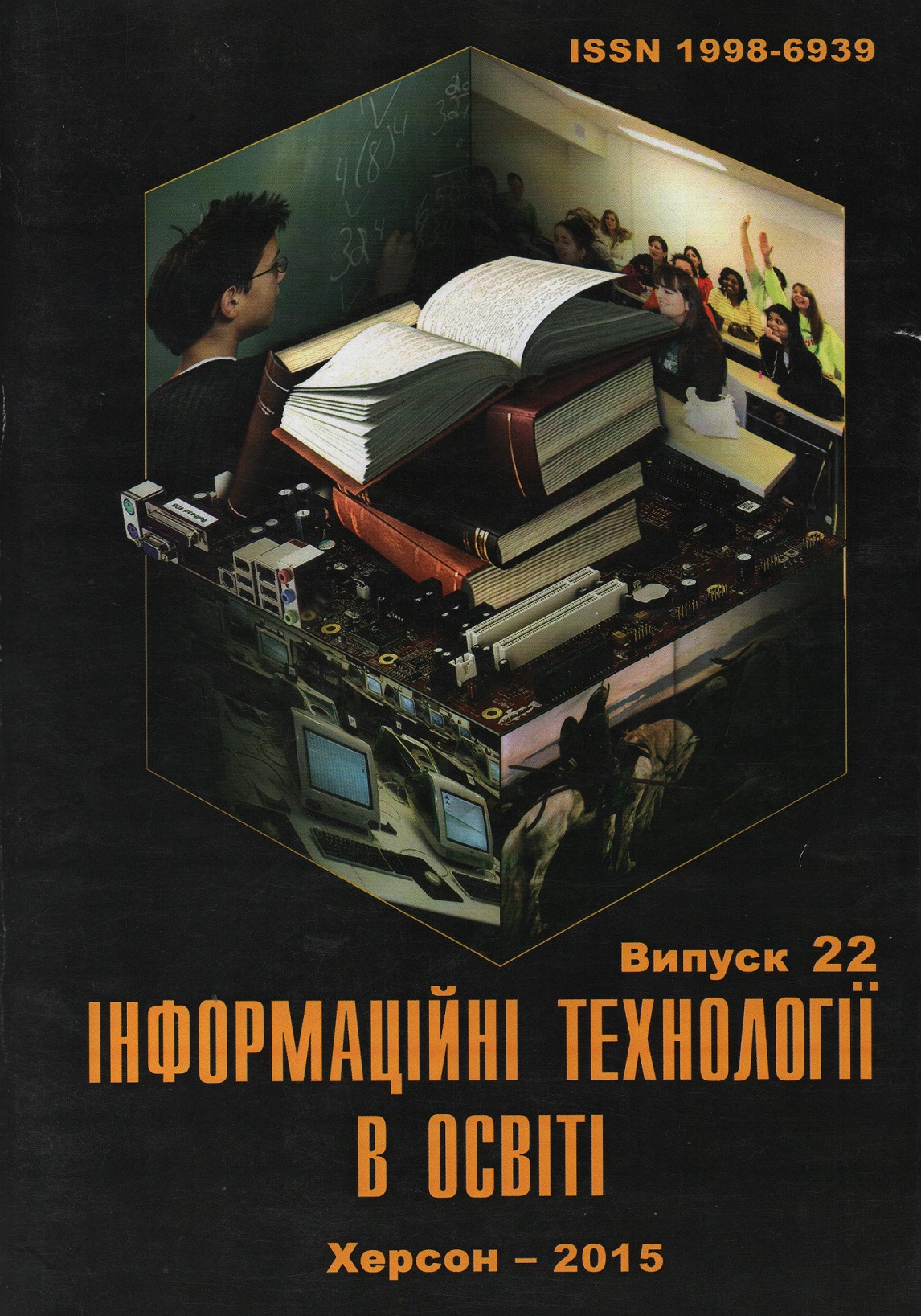STAFF TRAINING FOR SERVICE INDUSTRY
DOI:
https://doi.org/10.14308/ite000528Keywords:
the science of services, SSME, service engineering, system services, Web services, business process, problem streams, system services design, service engineerAbstract
In all countries across the world macroeconomic shift from the production of physical things (agriculture and manufactured goods) to execution of the service of public service. In headmost countries more than 70% of GDP forms by service industry, in which over half of mankind is working today (according to the information of International Labor Organization). The science of services that occurred recently upon an initiative of IBM firm, designed to explore the main principles of functioning complex services systems, ways of creation, scaling and improving such systems. In this paper considered the questions of penetration the services in engineering systems (particularly, in software structures) capabilities of the engineering and staffing processes of creating and maintaining of system services.
Downloads
Metrics
References
1. Priorities: Succeeding through Service Innovation – A Framework for Progress (http://www.ifm.eng.cam.ac.uk/ssme/ )
2. Source: Workshop and Global Survey of Service Research Leaders (IBM & IBM 2008), http://wpcarey.asu.edu/csl/knowledge/Research-Priorities.cfm
3. Maglio P., «Service systems, service scientists, SSME, and innovation», Communications of ACM, Volume 49, Issue 7, Pages: 81 – 85, 2006
4. Stauss B., Engelmann K. Kremer A., Luhn A. (Eds.),«Services Science: Fundamentals, Challenges and Future Developments», Springer, Berlin 2007
5. Fitzsimmons J., F Fitzsimmons M. «Service management: Operations, strategy information technology», 6th edition, New York: McGraw-Hill., Heskett, JL, TO 2007
6. Pinhanez C and Murphy W «Service Science Handbook». Springer, New York, 2011
7. P. Maglio, C. A: Kieliszewski, J Spohrer «Handbook of Service Science (Service Science: Research and Innovations in the Service Economy)», Springer, New York, 2010
8. H Demirkan, J Spohrer, V Krishna. «Service Systems Implementation (Service Science: Research and Innovations in the Service Economy)», Springer, New York, 2011
9. Succeeding through service innovation: A service perspective for education, research, business and government, ISBN: 978-1-902546-65-0.-//University of Cambridge Institute for Manufacturing (IfM) and International Business Machines Corporation (IBM), April 2008.- 30 p.
10. C. Mohan, SSME Research Areas (http://www.almaden.ibm.com/u/mohan/ )
11. Розробки університету Берклі в галузі SSME (http://rosetta.sims.berkeley.edu:8085/sylvia/ f06/view/202. complete )
12. Gianmario Motta, Thiago Barroero, Giovanni Pignatelli, Xiaofei Xu. SSME curricula: an overview (http://www.sciencedirect.com/science/article/pii/S1875389212013697)
13. Service Science, Management, and Engineering (SSME). Курс лекций. IBM Almaden Services Research. 2006 – 2007. (https://www.ibm.com/developerworks/wikis/display/ssme /Introductory+modules )
14. Петренко А.І. Концепція нової магістерської програми «Системне проектування ».-// Первая Международная научно-техническая конференция Computational Intelligence (CI -2011).- Черкассы, Украина, 10-13 мая, 2011.- c. 123-127.
15. Fu-ren Lin, Paul P. Maglio, Michael J. Shaw. Introduction to Service Science, Management, and Engineering (SSME), Minitrack, Proc. 2013 46th Hawaii International Conference on System Sciences, p.1299. – http://ieeexplore.ieee.org/stamp/stamp.jsp?arnumber=6479992
16. 2014 Service Science Research Symposium, Almaden Research Center in San Jose, California, 13th of November 2014 (http://researcher.watson.ibm.com/researcher/view_group_subpage. php?id=5592).
</uk>
<en>
1. Priorities: Succeeding through Service Innovation – A Framework for Progress (http://www.ifm.eng.cam.ac.uk/ssme/ )
2. Source: Workshop and Global Survey of Service Research Leaders (IBM & IBM 2008), http://wpcarey.asu.edu/csl/knowledge/Research-Priorities.cfm
3. Maglio P., «Service systems, service scientists, SSME, and innovation», Communications of ACM, Volume 49, Issue 7, Pages: 81 – 85, 2006
4. Stauss B., Engelmann K. Kremer A., Luhn A. (Eds.),«Services Science: Fundamentals, Challenges and Future Developments», Springer, Berlin 2007
5. Fitzsimmons J., F Fitzsimmons M. «Service management: Operations, strategy information technology», 6th edition, New York: McGraw-Hill., Heskett, JL, TO 2007
6. Pinhanez C and Murphy W «Service Science Handbook». Springer, New York, 2011
7. P. Maglio, C. A: Kieliszewski, J Spohrer «Handbook of Service Science (Service Science: Research and Innovations in the Service Economy)», Springer, New York, 2010
8. H Demirkan, J Spohrer, V Krishna. «Service Systems Implementation (Service Science: Research and Innovations in the Service Economy)», Springer, New York, 2011
9. Succeeding through service innovation: A service perspective for education, research, business and government, ISBN: 978-1-902546-65-0.-//University of Cambridge Institute for Manufacturing (IfM) and International Business Machines Corporation (IBM), April 2008.- 30 p.
10. C. Mohan, SSME Research Areas (http://www.almaden.ibm.com/u/mohan/ )
11. Rozrobki unIversitetu BerklI v galuzI SSME (http://rosetta.sims.berkeley.edu:8085/sylvia/ f06/view/202. complete )
12. Gianmario Motta, Thiago Barroero, Giovanni Pignatelli, Xiaofei Xu. SSME curricula: an overview (http://www.sciencedirect.com/science/article/pii/S1875389212013697)
13. Service Science, Management, and Engineering (SSME). Kurs lektsiy. IBM Almaden Services Research. 2006 – 2007. (https://www.ibm.com/developerworks/wikis/display/ssme /Introductory modules )
14. Petrenko A.I. KontseptsIya novoYi magIsterskoYi programi «Sistemne proektuvannya ».-// Pervaya Mezhdunarodnaya nauchno-tehnicheskaya konferentsiya Computational Intelligence (CI -2011).- Cherkassyi, Ukraina, 10-13 maya, 2011.- c. 123-127.
15. Fu-ren Lin, Paul P. Maglio, Michael J. Shaw. Introduction to Service Science, Management, and Engineering (SSME), Minitrack, Proc. 2013 46th Hawaii International Conference on System Sciences, p.1299. – http://ieeexplore.ieee.org/stamp/stamp.jsp?arnumber=6479992
16. 2014 Service Science Research Symposium, Almaden Research Center in San Jose, California, 13th of November 2014 (http://researcher.watson.ibm.com/researcher/view_group_subpage. php?id=5592).
</en>
Downloads
Published
How to Cite
Issue
Section
License
This work is licensed under a Creative Commons Attribution-NonCommercial-ShareAlike 4.0 International License.






























